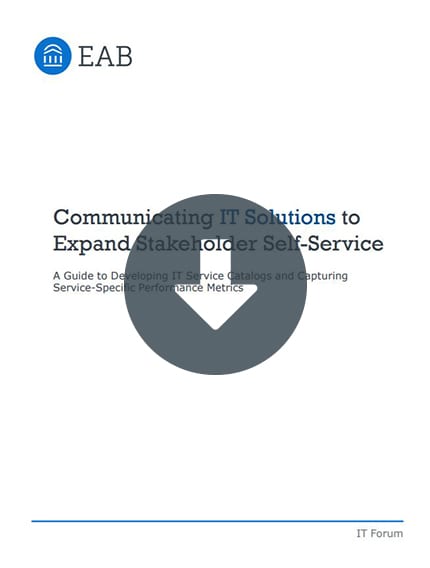
You likely know the importance of a service catalog: These resources articulate the tools and services that IT units offer to students, faculty, staff, and alumni. Catalogs that articulate solutions available through the department (and how to access them) increase user self-service, allowing users to access IT tools and services—without increasing the volume of requests that IT staff then need to triage.
But only 40% of higher ed IT organizations report having a service catalog. Those that do offer them rarely use layman’s terms that non-IT constituents can understand, limiting adoption.
Use this guide when creating or updating your institution’s IT service catalog to:
- Help the IT organization articulate clearly the services and tools offered to constituents within and beyond the institution
- Identify and define metrics for service provision and service level agreements with campus consumers
What’s inside this guide:
Part one: Listing and organizing IT services: To create a IT service catalog that will best facilitate end-user self-service, each office within the IT department must document the services they offer. The information in this section will facilitate discussion around services to include in the service catalog and how to organize those services. Read more on page three.
Part two: Describing IT services to end-users: Each service in the service catalog will have a standardized description to inform users about the service and set expectations for interactions with IT staff related to the service. Fill out this editable section to ensure the information is articulated in a way that non-technical community members can understand and encourages self-service when possible. Read more on page four.
Part three: Set expectations for users with service level agreements: Service catalogs that appropriately set user expectations for service availability and delivery are best positioned to help IT prioritize their work and respond to user feedback. In this section, IT staff should include information on existing departmental data related to service provision, to help determine appropriate baseline standards. Read more on page six.
Additional resources
Top 10 Most Pressing IT Service Management Issues:This research brief profiles the top 10 “up-at-night” service management issues in higher education and how IT leaders can articulate these concerns to other campus stakeholders.
Reducing Cycle Time Between Need and Solution:This research brief progressive institutions are deploying new processes to gain foresight into end users’ technology needs and to rapidly connect end users with the services they need.